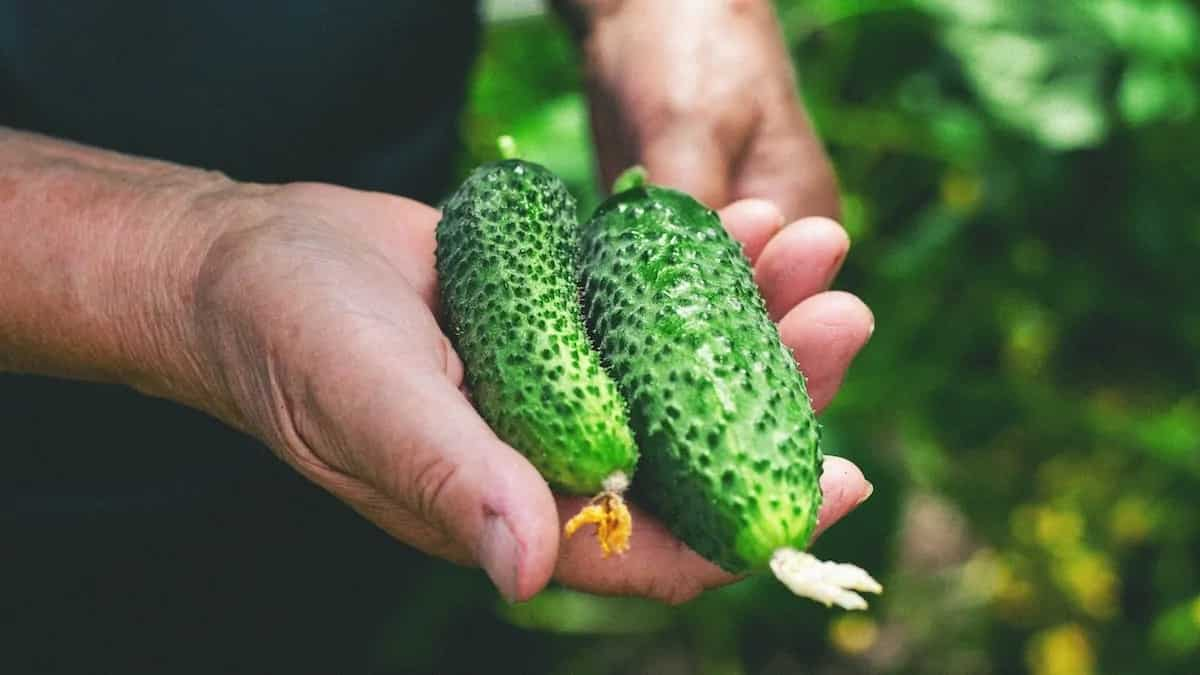Cucumber To Bottle Gourd, 7 Water-Rich Vegetables For Summer
Drinking 8 glasses of water every day is recommended. However, people are unaware that this isn't always adequate. Foods high in water content can aid in meeting your daily water needs. The Institute of Medicine estimates that fruits and vegetables account for around 20% of our total water intake. Summertime causes extreme fluid loss due to increased perspiration. That's why having high-water-content foods is so important. Listed below is a list of easily accessible water-rich foods.

| Ranita Ray
May 04, 2023

Lettuce
In addition to its many healthful benefits, this vegetable is 96% water. One serving of lettuce contains 1 gram of fibre and more than a quarter cup (59 ml) of water. In addition, it contains 5% of the recommended daily value of folate. Incorporating lettuce into your diet is as simple as making a salad. In place of more dehydrating grains like bread or pasta, it can be used as a "bun" for burgers or as a wrap in place of a tortilla.

Cucumber
Cucumbers, 95% water, are another great addition to a healthy and hydrated diet. They are mostly water. However, they supply certain minerals, including vitamin K, potassium, and magnesium, in trace amounts. Cucumbers are low in calories even when compared to other water-rich veggies. A half-cup portion has only 8 calories and is particularly refreshing because of the high water content.
Tomato
Only one medium tomato's water content is equivalent to half a cup's. Tomatoes have just 32 calories in a single cup due to their high water content. Tomatoes are a versatile ingredient that goes well in a variety of cuisines. From salads, soups, juices, curries to salsa one can benefit from their inclusion in any form.
Cauliflower
Cauliflower is an excellent addition to any diet since it is high in nutrients and water. Cauliflower has more than 59 ml of water and 3 g of satiating fibre per 100 grams. Only 25 calories per cup can be attributed to its high water content. When finely chopped and used as "rice" or in a cauliflower-based pizza crust, cauliflower can stand in for less hydrating grains.
Celery
The water content of this green leaf is very high (95%). Consuming celery regularly is a great way to stay hydrated. One serving size is one cup containing about half a cup of water. Celery may be cooked or eaten raw, making it easy to include in your diet. It's a great addition to soups and salads, and it's also great on its own with a nutritious dip like hummus or Greek yoghurt.
Zucchini
More than 90% water and 1 gram of fibre may be found in a 1-cup serving of chopped zucchini. Both of these elements are excellent for maintaining satiety. In addition, since zucchini is mostly water, there aren't many calories per serving. Add zucchini to soups, salads and stir-fries or eat it as a side dish. You may also slice it into thin strands to make "noodles" to replace traditional pasta.
Bottle Gourd
Bottle gourd or lauki is a water-rich vegetable composed of 92% water. This makes it an excellent choice for hydration and maintaining electrolyte balance. It is also low in calories and fibre. Its high water content makes it an excellent ingredient for soups and stews. Bottle gourd is a nutritious and hydrating vegetable and a must-have veggie in summer.

